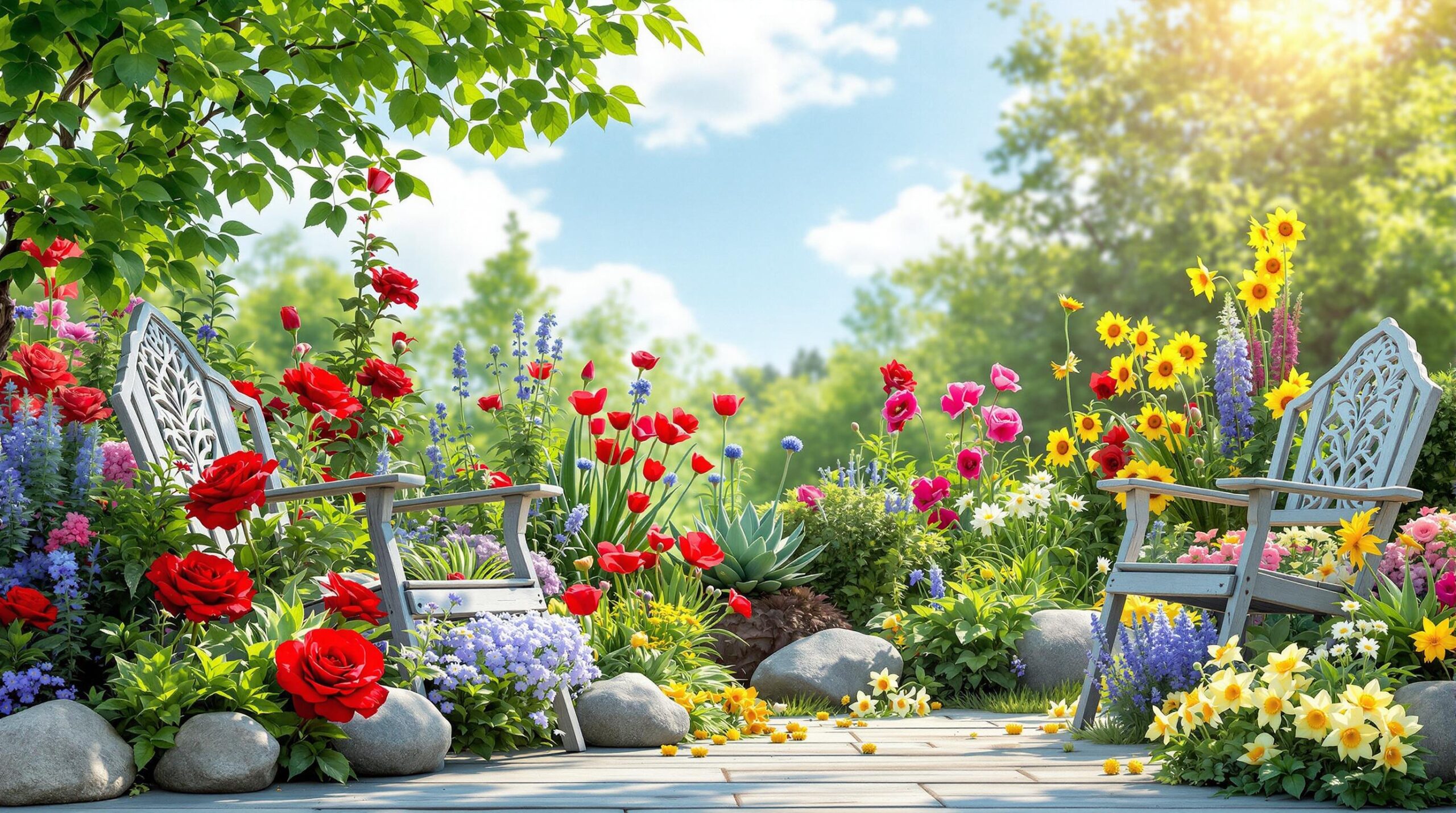In the vivid world of landscape design, the interplay of color is not just an aesthetic choice; it’s a powerful tool that can enhance both the beauty and functionality of outdoor spaces. As we step into 2025, creating beautiful gardens, known as Color Burst Landscapes, has never been more significant. The strategic selection of plant colors can transform a garden into a canvas where nature’s hues blend harmoniously, offering serene yet vibrant experiences that draw people in.
This article delves into the principles of color theory in landscaping, from understanding primary and secondary colors to selecting plants that align with seasonal changes. By mastering these concepts, you can cultivate Vibrant Gardens that capture interest and create emotional connections.
- Understanding Colors in Landscape Design
- The Impact of Perception and Value
- Creating Effective Color Schemes
- Utilizing Foliage and Seasonal Colors
- The Role of Evergreens and Deciduous Plants
- Color’s Influence on Spatial Quality
- Light’s Effect on Color Perception
Understanding Colors in Landscape Design
Colors can be categorized into primary colors—blue, red, and yellow—and secondary colors—green, orange, and violet—created by mixing two primary colors. Such dynamics are illustrated in the color wheel, a practical tool for visual representation. By mastering the basics, you can orchestrate a stunning Flora Palette that resonates with natural beauty.

The Impact of Perception and Value
The emotional weight of color is profound. Cool colors like greens and blues evoke calm and relaxation, while warm colors like reds and yellows excite and energize. This understanding of color value—the darkness or lightness of a hue—can dramatically alter the way a landscape is perceived.
- Cool Colors: Green, Blue (relaxing)
- Warm Colors: Red, Yellow (inviting excitement)
- Purple: Depends on surrounding colors (versatile perception)
| Color Type | Emotional Response | Examples |
|---|---|---|
| Cool | Calm, Relaxed | Blue Hydrangeas, Green Ferns |
| Warm | Excitement, Energy | Red Roses, Yellow Marigolds |
| Purple | Ambiguous (context-dependent) | Purple Petunias |
Creating Effective Color Schemes
Inspired by natural landscapes, color schemes can evoke different emotional responses. Understanding how to use these schemes – be it monochromatic for subtlety, analogous for a cohesive look, or complementary for vibrant contrasts – is vital in forming a Harmonious Landscape.
Here are some popular color schemes:
- Monochromatic: Variations of a single color, e.g., varying shades of green.
- Analogous: Colors next to each other on the wheel, providing a seamless flow—think blues and greens.
- Complementary: Opposite colors create visual excitement. A mix of purple and yellow is striking!
Utilizing Foliage and Seasonal Colors
Incorporating foliage color enhances the visual appeal of a garden beyond flowering seasons. Variegated leaves offer a diverse color experience, while the seasonal shifts in flora can create ever-changing backdrops.
- Winter: Evergreens provide consistent color.
- Spring: Bursting blooms offer a vibrant array.
- Summer: Foliage shines in lush greens.
- Fall: Rich reds and oranges illuminate your landscape.
The Role of Evergreens and Deciduous Plants
The balance between evergreens and deciduous plants can dictate the overall color composition throughout the year. Evergreens maintain consistent hues while deciduous plants offer stunning transformations across seasons.
| Type of Plant | Color Contribution | Seasonal Interest |
|---|---|---|
| Evergreens | Year-round greenery | Stable, predictable |
| Deciduous | Seasonal color changes | Dynamic, varied |
Landscaping solutions for areas beneath trees where grass struggles to thrive
Color’s Influence on Spatial Quality
Color also plays a crucial role in the spatial perception of landscapes. Cool colors tend to recede, making a space feel larger, while warm colors bring areas closer, creating intimacy.
- Cool Colors: Make spaces feel bigger 🌊
- Warm Colors: Create cozy environments 🔥
Light’s Effect on Color Perception
The amount of light impacts how colors appear in a landscape. Bright sunlight tends to intensify warm colors while shadowy areas can amplify cool shades, offering more dynamic visual experiences as the day progresses.
By thoughtfully navigating these principles, you can create exceptional landscapes that not only boast aesthetic beauty but also invite emotional connections. Now, let’s consider a few common questions about color theory in landscaping.
FAQ
What is the importance of color in landscaping?
Color significantly affects mood, perception of space, and overall aesthetic appeal, enhancing emotional connections to outdoor spaces.
How do I choose a color scheme for my garden?
Consider your desired mood, seasonal changes, and the balance of complementary or analogous colors to create a cohesive look.
Why are foliage colors important?
Foliage often provides structure and interest year-round, especially during off-seasons when flowers are not present.
How can seasonal changes affect my landscape’s color palette?
Seasonal variations can offer dramatic shifts in color, creating dynamic landscapes that evolve throughout the year.
Can the surrounding environment influence color perception?
Yes! The colors of nearby structures and plants can change how the colors in your landscape are perceived, affecting its overall harmony.















